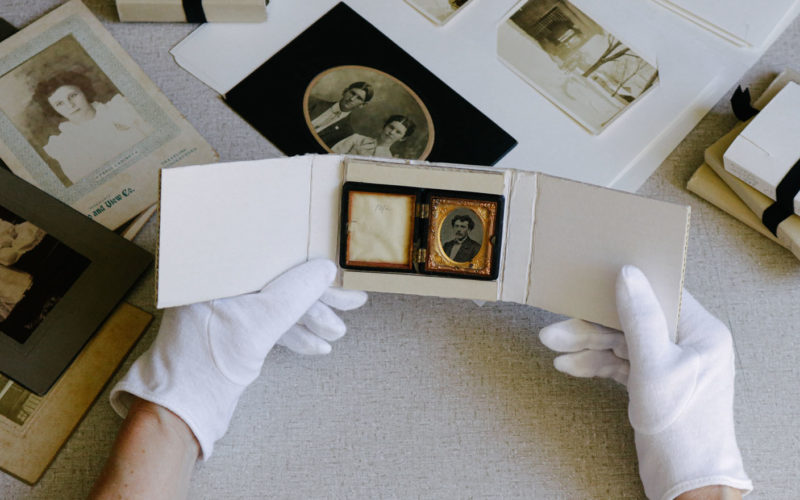Shiloh shares tips to make pictures more permanent
BECCA MARTIN-BROWN
bmartin@nwadg.com
The Shiloh Museum of Ozark History in Springdale is arguably the largest repository of Northwest Arkansas history in the world — because it is the keeper of more than half a million images that tell the region’s stories.
“We have folks who may donate one photo, a dozen, or hundreds,” says Marie Demeroukas, the museum’s photo archivist. “For instance, we recently received negatives taken from the 1950s into the 1970s by talented Springdale photographers Gene Thompson and Bruce Vaughan — over 1,700 images in all.”
Along with donations — or the opportunity to copy treasured family photos for the museum archives — “we often field questions about photo preservation,” Demeroukas adds. “On the physical preservation end, I’m asked how to store fragile photos and where to get storage supplies. We’re also often asked what settings to use when scanning images for digitization.”
Photos come to the museum in conditions “from excellent to dreadful,” Demeroukas says. “We preserve them as is, because we’re not trained conservators.” But the bigger concern nowadays is that most images are transitory — shot on cellphones and never printed. It seems that “print your photos” must now part of the museum’s message, too.
“When it comes to preserving photos in the long term, prints and reprints are synonymous with longevity,” says the museum’s photographer, Bo Williams. “We can do amazing things these days with the technology we have, but the future is in print.”
“All it takes is one reset on your cell phone or one fiasco with your electronics,” adds research specialist Rachel Whitaker. “Printing images is more likely to preserve the image for the future.”
In a perfect preservation world, those prints would be black and white, says Williams.
“Black and white negative film and black and white prints inherently have a longer shelf life due to the fact that the process to create them is much simpler when compared to color processes,” he explains. “That is why Shiloh Museum still copies historic images on black and white film and produces black and white prints for viewing purposes. But at the end of the day, when not properly cared for, all prints and film can degrade over time, so it becomes a matter of halting the aging process as much as possible and maintaining the condition of images as best we can.”
So what’s the best way to guarantee family photos arrive unscathed in the hands of your great-great-grandchild? The Shiloh Museum plans to answer that question at a photo preservation workshop July 13.
“From my perspective, I’d say the biggest secret to preserving photos is to get started,” Demeroukas says. “It’s so easy to be overwhelmed thinking about all that it will take to accomplish the project, but if folks can break photo preservation down into smaller tasks, it will hopefully seem less daunting.
“The first two tasks I recommend? First, gather ALL of your photos, slides, negatives, etc., together in one place. Second, fully document the people, places, and events seen in the images. If nothing else, you’ve made it easier for you and your relatives to locate and value your family photos. That’s a big step towards preservation.”
And, adds Williams, “if you are unable to have your images printed … have them uploaded to a cloud storage service. Redundancy is the name of the game when preserving digital images.”
__
FAQ
Photo Preservation
Workshop
WHEN — 10 a.m.-3 p.m. July 13
WHERE — Shiloh Museum of Ozark History in Springdale
COST — Free; reservations NOT required
INFO — 750-8165 or shilohmuseum.org










